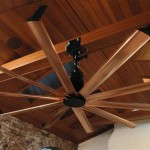Essential Aspects of Photocell Sensors for Outdoor Lighting
Photocell sensors play a crucial role in optimizing outdoor lighting systems, providing energy efficiency and convenience. Understanding these essential aspects is key to selecting and utilizing photocell sensors effectively.
Function and Operation: Photocell sensors, also known as photoresistors, are light-sensitive devices that detect the intensity of light. When exposed to light, their electrical resistance changes, enabling them to control lighting fixtures. During daylight hours, photocell sensors sense the presence of sunlight and switch off lights, reducing energy consumption.
Sensitivity and Adjustment: The sensitivity of photocell sensors determines their response to varying light levels. Adjustable sensors allow for customization of the light threshold at which they activate or deactivate lights. This enables users to tailor the lighting system to specific requirements, ensuring optimal illumination based on desired brightness levels.
Time Delay: Photocell sensors often incorporate a time delay feature to prevent flickering or premature activation. When the light level changes, the time delay provides a buffer before the sensor activates the lights. It helps minimize false triggering and ensures the lights remain off during brief light level fluctuations.
Durability and Longevity: Outdoor lighting applications demand durable photocell sensors that can withstand harsh weather conditions, including extreme temperatures, moisture, and UV radiation. Robust sensors ensure reliable operation over extended periods, minimizing maintenance and replacement costs.
Installation and Placement: Proper installation and placement of photocell sensors are crucial for optimal performance. The sensor should be positioned where it can receive the most direct sunlight, avoiding obstructions or shadows that may interfere with its light sensing capabilities. Proper mounting and wiring ensure safe and efficient operation.
Compatibility: Photocell sensors must be compatible with the lighting fixtures and electrical system they are controlling. Selecting sensors that match the voltage, wattage, and control method of the fixtures is essential for safe and compatible operation.
In conclusion, understanding these essential aspects of photocell sensors empowers users to select and implement lighting systems that seamlessly integrate with natural light patterns. By optimizing energy efficiency, enhancing convenience, and ensuring long-term reliability, photocell sensors play a vital role in enhancing outdoor lighting solutions.

Wall Mounted Photocell Sensor Outdoor Lighting

Hardwire Post Eye Light Control With Photocell Automatic Sensor Switch Ledwholers

120v Ac Photoelectric Switch Photocell Light Dusk To Dawn Sensor For Outdoor Lighting Hardwired Post Eye Control Fruugo Fi

How To Add A Light Sensor Outdoor Lanterns The Navage Patch

Ip54 Outdoor Light Sensor Switch Photocontrol China Photocell Control Made In Com

Solus Photocell Light Sensor Switch For Hardwire Outdoor Lamp Posts With Ezee Change Plug Dusk To Dawn Control

Light Control Socket With Photocell Sensor Outdoor True Value

240v Dusk To Dawn Sensor External Photocell Unit Lumena Lights

Outdoor Light Intensity Sensor Ahkf

Hardwire Post Eye Light Control With Photocell Automatic Sensor Switch Ledwholers







